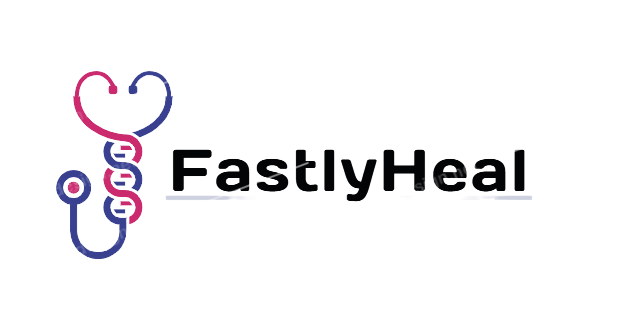Hands are more than an important tool, so it can be exasperating when there is a problem with them. There are a few possible causes of swollen and sore hand veins: an infection, clots, problems caused by tobacco, and even a drug can make you notice issues in this particular area.
Next, we will tell you more about these problems that can cause pain in the veins of the hands in the FastlyHealarticle: why do the veins of the hands swell and hurt?
Table of Contents
Superficial thrombophlebitis
If you wonder why the veins in your hands are swollen and painful, this is the most common cause. It is an inflammation and obstruction by blood clots in one or more superficial veins. That is, they are below the skin. Superficial thrombophlebitis usually causes this swelling and pain in the veins of the hand.
There are three reasons that thrombophlebitis can occur :
- Having a disease in which clots are generated.
- Having suffered an injury to a vein.
- If drugs were injected intravenously.
Of course, not everyone who receives an injection into a vein will have these types of problems, and some conditions can predispose to superficial thrombophlebitis :
- Be pregnant.
- Use hormonal contraceptives.
- Having a disease that increases the risk of clots: liver problems, clotting diseases, cancer, among others.
- Having an infection.
- That the affected area has been immobile for a long time.
- Having suffered thrombophlebitis of the deeper veins.
How do you know if you have thrombophlebitis?
In addition to the vein becoming swollen and painful, the skin in the affected area looks red and hurts a lot. In that area, the temperature will be increased, and you may also notice that that entire arm hurts. Although you do not want to touch the hand because of how sensitive it will be, if you do, you will notice that the vein is hardened as well.
What is done in case of suspected thrombophlebitis?
As a first measure, your doctor will try to confirm that it is thrombophlebitis. He may request studies such as ultrasound and culture of the area if there is a catheter and infection is suspected.
This catheter or canalization will be removed, and, if needed, a new one will be placed in another location to allow the affected vein to deflate.
Analgesics, warm compresses in the area, and elevation of the hand with the problem can be indicated to improve the discomfort. If an infection is detected, treatment will consist of antibiotics. Suppose there is also inflammation in the deeper veins (deep thrombophlebitis). In that case, anticoagulants will be administered since there is a risk that the clots formed in this area will go too delicate areas such as the lungs or the brain.
How is this picture expected to evolve?
Usually, with proper treatment, the problem disappears in 1 to 2 weeks. What can remain for a longer time is the hardness of the affected vein.
Buerger’s disease
Buerger’s disease is also known as obliterative thromboangiitis. This disease has been related to tobacco consumption in any of its forms.
The veins and arteries in the hands and feet become inflamed, which may explain why the veins in the hands swell and hurt. Buerger’s disease decreases blood flow through them, which can become blocked by clots. The circulation of the legs and arms may also suffer over time.
Symptoms such as:
- Tingling
- Cold, pale limbs
- Pain
It can even reach gangrene, with the need for amputations. The only way to stop the disease is to correct your habits: quit smoking and improve your diet.
Varices
The veins have valves that help the venous return, that is, the transport of blood to the heart. Varicose veins are venous thickenings caused by the loss of this valve function. It almost always occurs in the legs, but there can be varicose veins in any area of the body where there are veins, and the hands do not escape it.
But the fact that there are well-visible veins in the hands and arms does not mean that they are varicose veins many times. Thin people who do force or exercise or consume a lot of liquids may have normal but noticeably marked veins. In these people, no treatment is necessary since it is expected. Their body works well this way.
Treatment of varicose veins
In cases where varicose veins are aesthetically bothersome, sclerosing treatments are sometimes suggested, but this is not prudent since it alters the normal functioning of the circulation, and other types of problems may appear.
On the other hand, when varicose veins are painful or swelling is generated in the affected area, a treatment may be necessary, ranging from medication by mouth to sclerosis (application of drugs to make them fibrosed, which makes them no longer work).
If you want to know more information about varicose veins, see Varicose veins: causes, symptoms, and treatments.
Drugs that can cause enlargement of the veins in the hand
It has been seen that those patients who are medicated with amiodarone (a drug that helps to dilate blood vessels in the heart and control arrhythmias) tend to have more dilated veins in the hands. But this has not been related to other significant problems.
This article is merely informative. At FastlyHeal .com, we do not have the power to prescribe medical treatments or make any diagnosis. We invite you to see a doctor if you present any type of condition or discomfort.
If you want to read more articles similar to Why do hand veins swell and hurt, we recommend that you enter our Blood, heart, and circulation category.

I am a Surgeon with a diploma in comprehensive ultrasound and surgical care residency, an area I am specializing in. During the exercise of my profession, I have realized the need for patients to know the diseases they suffer, and I can tell you that a large part of their complications is due to a lack of information. Being a health web writer allows me to transmit my experience, without borders, to all those readers eager for knowledge, educate them in the prevention of diseases and promote a healthy lifestyle.
